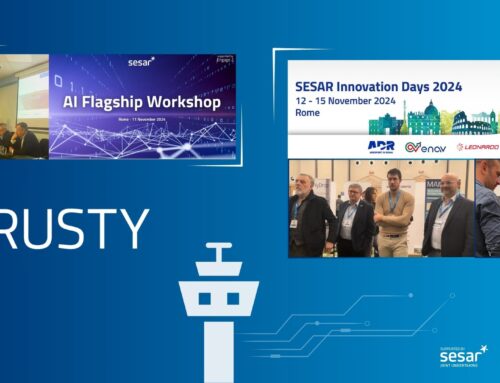On January 25th, an online workshop was conducted with the project’s advisory board representatives aimed at identifying potential Key Performance Indicators to evaluate the attributes of human trust in the ATM environment and trustworthiness of AI design from a user perspective.
The TRUSTY project’s main aspiration is to elevate the transparency and comprehensibility of AI, when in support of critical decisions within Remote Digital Tower (RDT) operations, thereby establishing elevated levels of trustworthiness and acceptance.
For this purpose, the TRUSTY consortium invited several experts composing the external advisory board, to participate in a workshop aimed at driving their ‘Subject Matter Expert’ input into the earliest stages of the project. This expert knowledge and experience will then be used to develop user needs and inform the design development of the TRUSTY solution.
The workshop aimed to bridge the gap between current Air Traffic Control (ATC) systems and the integration potential of the TRUSTY Artificial Intelligence solution. Objectives included exploring existing disparities, assessing the strengths and weaknesses of current ATC systems, delving into current levels of trust, performance and user acceptance, and investigating future-oriented scenarios while examining the artificial intelligence (AI) TRUSTY solution.
The meeting featured two focused sessions on trust development in air traffic control (ATC) operations, covering key aspects such as comprehending the logic behind system proposals, evaluating the cognitive workload impact of failures, emphasizing the crucial role of trust in surveillance systems and team dynamics, and the importance of assessing human contribution to system reliability. The discussions concluded with a dynamic exploration of the current intersection of technology and trust levels in diverse scenarios, specifically examining the potential of AI to assist air traffic controllers in critical situations.
The participation of different stakeholders, such as the scientific research community, end users namely ATC Operators, manufacturers and regulatory bodies make possible a deep debate and investigation on the level of trust in humans and decision support systems in the current perspective and from a future perspective regarding the intelligent AI-based assistant.


![🎥TRUSTY Voices: Prof. Mobyen Uddin Ahmed Shares the Project’s Vision [Press Play]](https://research.dblue.it/trusty/wp-content/uploads/sites/16/2025/07/TRUSTY-Mobyen-interview-2-500x383.png)

